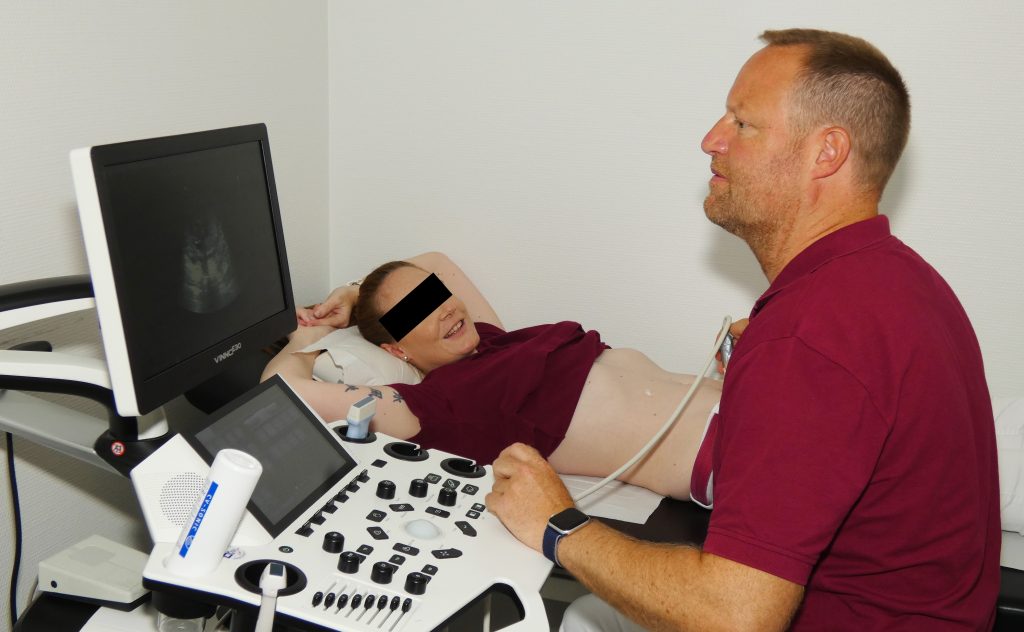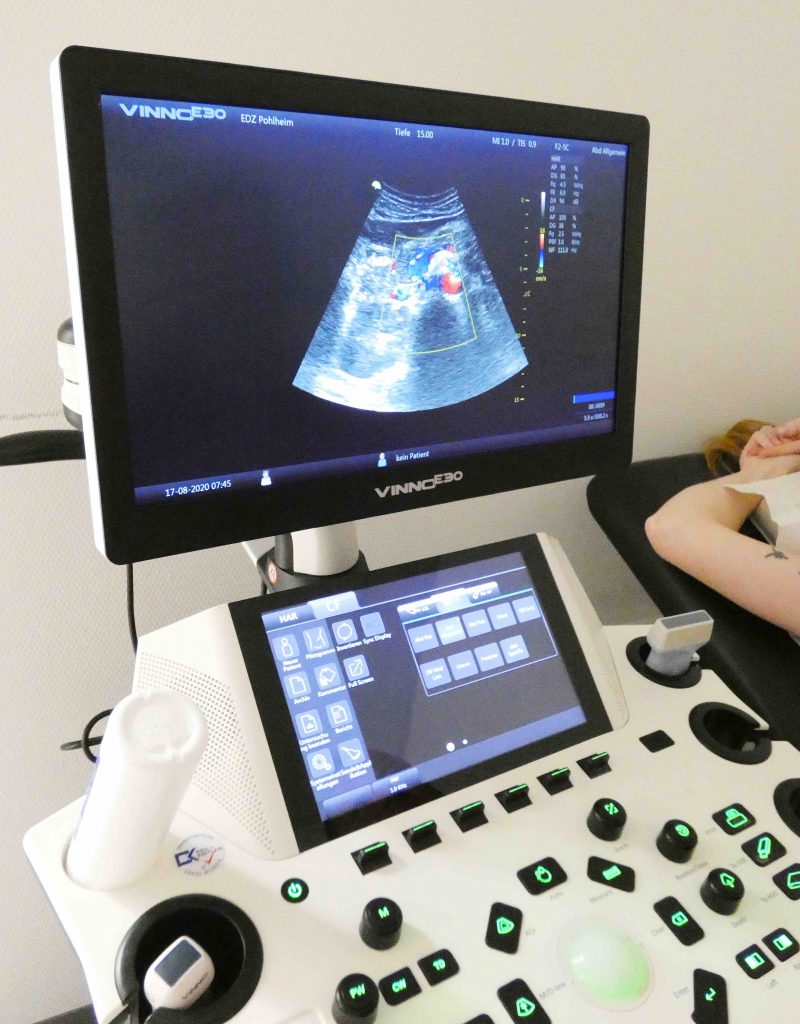Ultraschall (Sonographie) des Bauchraums
Die Ultraschall-Untersuchung (auch Sonographie genannt) wenden wir zur schmerz- und strahlungsfreien Abklärung innerer Erkrankungen an. Sie dient der Darstellung und Funktionsbeurteilung der Bauch- und retroperitonealen Organe, insbesondere der Leber, Gallenblase und -wege, Bauchspeicheldrüse, Milz, Nieren, ableitenden Harnwege, großen Bauchgefäße, Lymphknotenstationen und des Darmes.
Eine Früherkennung, Erst- und Verlaufsbeurteilung akuter als auch chronischer entzündlicher und tumoröser Erkrankungen ist hiermit möglich. Dabei kommt moderne B-Bild- und Farbdoppler/Duplex-Technik zum Einsatz.


